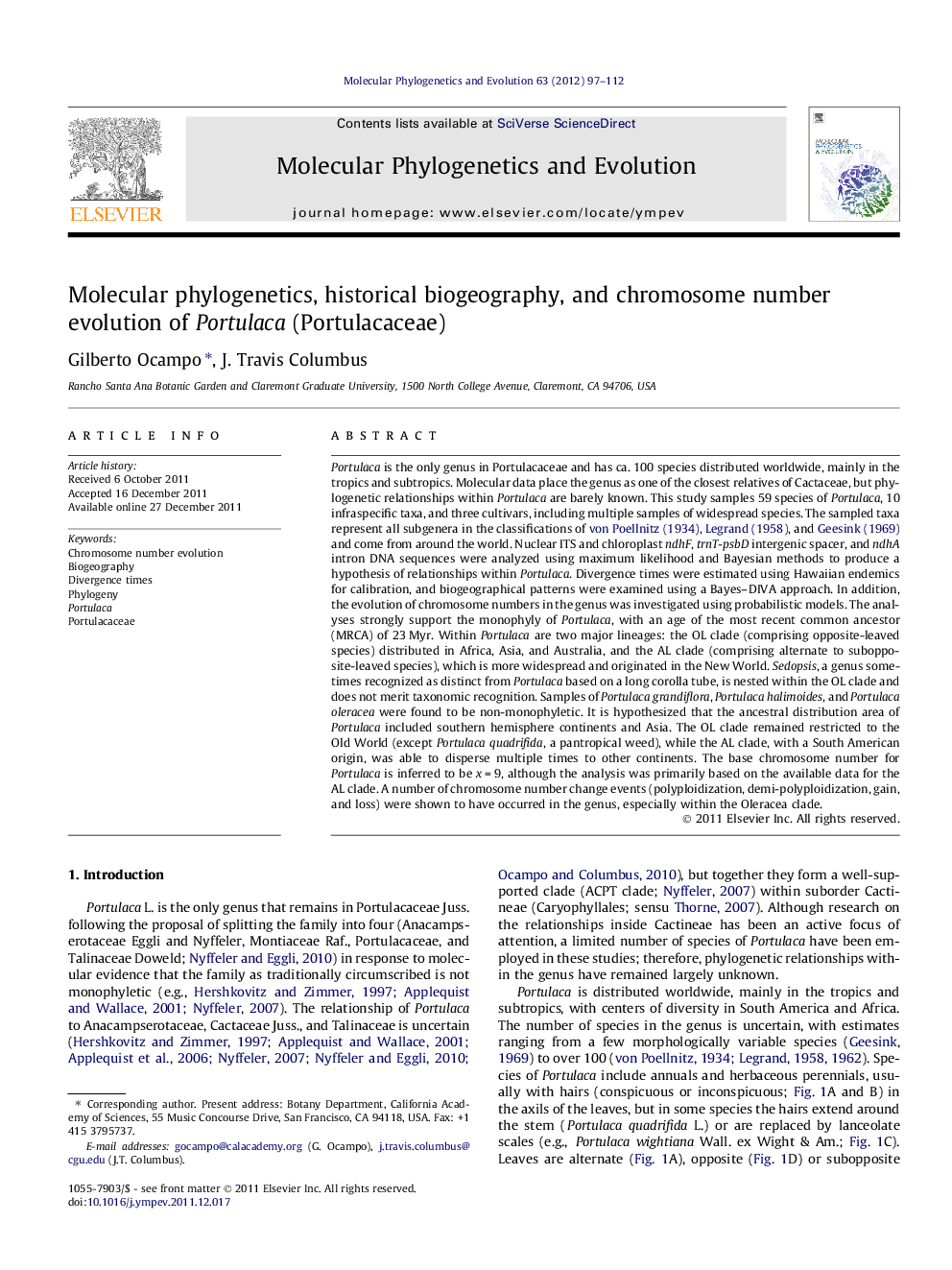| کد مقاله | کد نشریه | سال انتشار | مقاله انگلیسی | نسخه تمام متن |
|---|---|---|---|---|
| 2834168 | 1164296 | 2012 | 16 صفحه PDF | دانلود رایگان |

Portulaca is the only genus in Portulacaceae and has ca. 100 species distributed worldwide, mainly in the tropics and subtropics. Molecular data place the genus as one of the closest relatives of Cactaceae, but phylogenetic relationships within Portulaca are barely known. This study samples 59 species of Portulaca, 10 infraspecific taxa, and three cultivars, including multiple samples of widespread species. The sampled taxa represent all subgenera in the classifications of von Poellnitz, 1934 and Legrand, 1958, and Geesink (1969) and come from around the world. Nuclear ITS and chloroplast ndhF, trnT-psbD intergenic spacer, and ndhA intron DNA sequences were analyzed using maximum likelihood and Bayesian methods to produce a hypothesis of relationships within Portulaca. Divergence times were estimated using Hawaiian endemics for calibration, and biogeographical patterns were examined using a Bayes–DIVA approach. In addition, the evolution of chromosome numbers in the genus was investigated using probabilistic models. The analyses strongly support the monophyly of Portulaca, with an age of the most recent common ancestor (MRCA) of 23 Myr. Within Portulaca are two major lineages: the OL clade (comprising opposite-leaved species) distributed in Africa, Asia, and Australia, and the AL clade (comprising alternate to subopposite-leaved species), which is more widespread and originated in the New World. Sedopsis, a genus sometimes recognized as distinct from Portulaca based on a long corolla tube, is nested within the OL clade and does not merit taxonomic recognition. Samples of Portulaca grandiflora, Portulaca halimoides, and Portulaca oleracea were found to be non-monophyletic. It is hypothesized that the ancestral distribution area of Portulaca included southern hemisphere continents and Asia. The OL clade remained restricted to the Old World (except Portulaca quadrifida, a pantropical weed), while the AL clade, with a South American origin, was able to disperse multiple times to other continents. The base chromosome number for Portulaca is inferred to be x = 9, although the analysis was primarily based on the available data for the AL clade. A number of chromosome number change events (polyploidization, demi-polyploidization, gain, and loss) were shown to have occurred in the genus, especially within the Oleracea clade.
Figure optionsDownload as PowerPoint slideHighlights
► Portulaca is monophyletic, with two strongly supported major clades.
► Samples of three species were found to be non-monophyletic.
► The age of the most recent common ancestor was estimated at 23 Myr.
► The ancestral distribution may have included southern hemisphere continents and Asia.
► The base chromosome number for Portulaca is inferred to be x = 9.
Journal: Molecular Phylogenetics and Evolution - Volume 63, Issue 1, April 2012, Pages 97–112